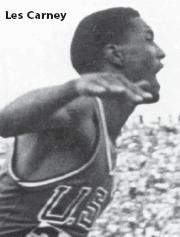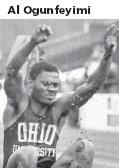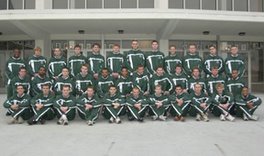From the Athens News:
State audit shows $$ performance of various OU sports
Thursday, March 15th, 2007
During the fiscal year ending last June, the only major Ohio University sports program that operated in the black budget-wise was men's basketball, according to a recently released state financial audit of OU.
The independent audit, conducted by Deloitte & Touche LLP, shows that in FY 2006, the men's basketball program took in revenues of over $1.52 million and had expenses of under $1.06 million, to end the year $463,899 to the good financially.
The men's football and women's basketball programs, by contrast, ran deficits of more than $428,000 and $227,000 respectively, the audit shows.
All other sports programs at OU combined racked up a deficit of more than $2.1 million, according to the audit, though non-program-specific sports (a separate category) helped cover this shortfall, ending the year with more than $2 million of revenues over their expenditures.
Overall, intercollegiate athletics programs at OU accounted for a loss of $281,557, the audit shows.
The audit, which looked closely at various parts of OU's budget, acknowledges that "in many respects, FY 2006 was a trying year for the university," because of widely publicized problems with computer security breaches and student plagiarism.
However, the auditors add, "with many eyes on its response, the university has taken ownership of those issues and is working diligently to address the IT (information technology) issues and to make good come out of those 'teachable moments' for our students."
One positive budgetary sign that shows up in the audit is an increase over the previous year in OU's total net assets at fiscal year's end. This number - total assets minus total liabilities - has increased from $462 million in FY 2004, to more than $482 million in FY 2005, and to more than $506 million in FY 2006.
As the audit makes clear, however, this increase has been made possible, in the face of falling state subsidy, partly by steadily increasing tuition rates.
OU increased tuition by 6 percent for undergraduates and 3 percent for graduate students, and increased room rates by 4 percent in FY 2006. The previous year, OU had increased both undergraduate and graduate student tuition by 9 percent, and hiked both room-and-board rates by 3 percent.
From FY 2004 to 2005, OU's state money support fell by more than $2.76 million, then fell by more than $2.25 million the next year.
However, "student receivables" - mainly tuition and fees - went up by more than $3.16 million from FY 2005 to FY 2006, owing to the tuition increase.
OU continues to build and renovate campus facilities, and after seeing its debt obligations in the form of outstanding bonds and notes drop between FY 2004 and 2005, from more than $175 million to about $167 million, that number went up in FY 2006 to more than $192 million.
Projects completed during FY 2006 include renovation of the Biddle Hall dormitory ($5.2 million), upgrade of the Lausche heating plant ($3.2 million), extension of steam to the Ridges ($1.8 million), conversion of part of Scott Quad from offices to student rooms ($1.3 million) and replacement of South Green conduits ($1 million).
Cumulative costs of projects still underway during FY 2006 - ranging from the new Baker University Center to the renovation of Alden Library's second floor - represent a cost of about $82.4 million, the audit says.
From FY 2005 to 2006, the university shifted its mix of investments. (These numbers do not include the sizable investments handled by the OU Foundation.)
OU has put more of its investment money in stocks and less in bonds. Compared to FY 2005, when the university had about 2.8 percent of its portfolio in common stock and 40.5 percent in equity mutual funds, those numbers went to 4.3 and 44.1 percent in FY 2006.
From having about 2.6 percent of its portfolio in corporate bonds and notes, and about 43.3 percent in bond mutual funds in FY 2005, OU in FY 2006 lowered those percentages to about 1.2 and 39.3 percent.
It also moved more heavily into mortgage-backed securities, upping its portfolio percentage from about 1.9 percent to about 6.4 percent.
Thursday, March 15, 2007
Subscribe to:
Post Comments (Atom)




















No comments:
Post a Comment